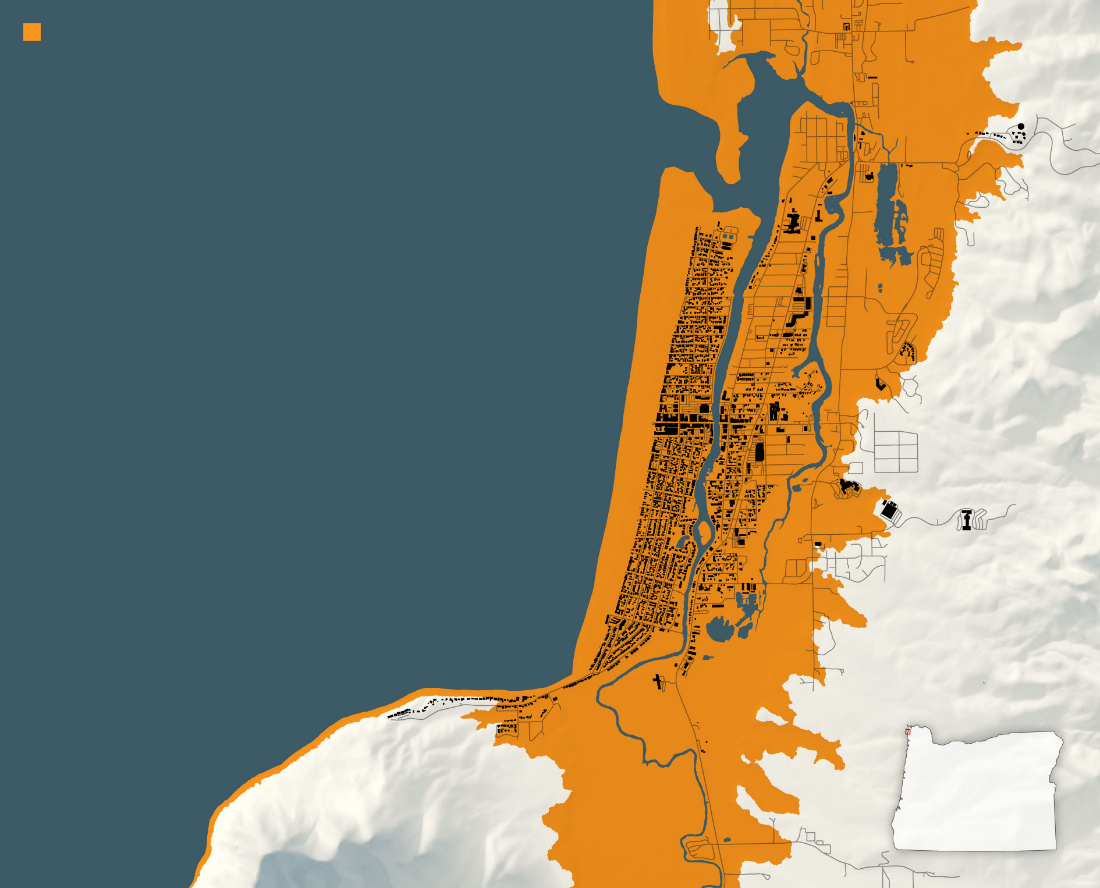Any tsunami is a dangerous event that can take many people’s lives and deal much damage to buildings and structures in the area of effect. Citizens of coastal cities should be ready for such an occasion to save themselves in case of an earthquake strong enough to create a tsunami. Many cities still lack safety measures and cannot provide their citizens with evacuation paths to avoid vast water waves. For example, Seaside, Oregon, has no evacuation towers, and almost 7,000 people who live there will be in danger if a tsunami occurs. This paper provides a tsunami resilience plan for Seaside to ensure its citizens’ safety in case of such a disaster by building evacuation towers in the city.

The figure above is the inundation map of the Seaside city, and the orange areas show which territories can be potentially flooded in case of a tsunami caused by a 9.0 earthquake. The map suggests that the entire territory of the town will be in danger if an earthquake of such a magnitude occurs.
The most efficient way to prevent the dangers of a tsunami and save people’s lives is to build enough evacuation structures to provide citizens with an escape route. According to Baker (2022), the only safety measure taken by the Seaside officials is relocating their middle and high schools to higher ground, namely the hills east of town. This action is efficient, yet it is not enough to save the Seaside’s population. If a tsunami hits the city, its territory will be almost entirely flooded (see Figure 1). Therefore, building evacuation towers within the endangered areas can help save many lives since those structures provide escape routes to a safer place.
Particular calculations have been made to identify the number of evacuation towers needed and the budget required to build them. According to Baker (2022), one such structure can provide an escape option to approximately 370 people, though it is advisable to build additional towers in case of population growth (para. 22). Therefore, considering the population of Seaside, 20 evacuation towers will be enough for all citizens to get to safety in time.
Those structures should be dispersed alongside the city so the citizens can reach one of the towers within 10-15 minutes. It is the approximate time they will have until the wave arrives, depending on the location of the city’s residents (Baker, 2022, para. 18). The budget for this resilience plan is $60 million since each evacuation tower costs $3 million (Baker, 2022, para. 23). The work timeline for the project is three years because it is crucial to take safety measures as soon as possible. Baker (2022) reports that, based on the geologic evidence, 9.0 magnitude quakes happen each 250-430 years, and the last one was 322 years ago (para. 33). In other words, a 100 feet high tsunami can occur anytime now (Baker, 2022). Thus, the faster the towers are built, the sooner people’s safety is ensured.
Reference
Baker, M. (2022). The tsunami could kill thousands. Can they build an escape?. The New York Times. Web.